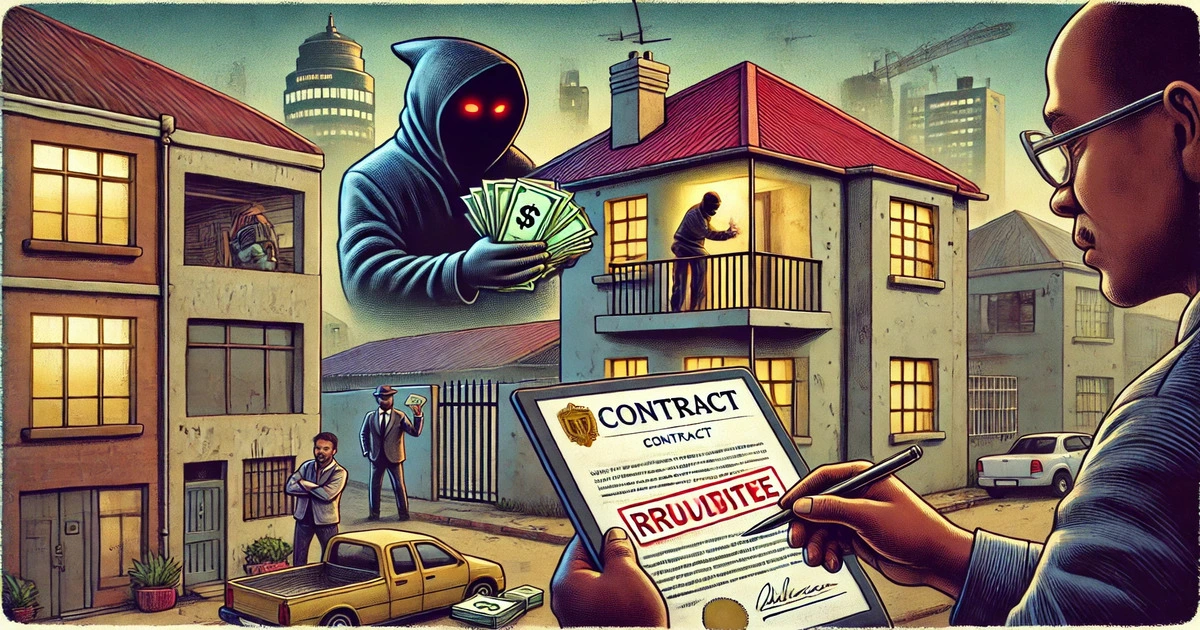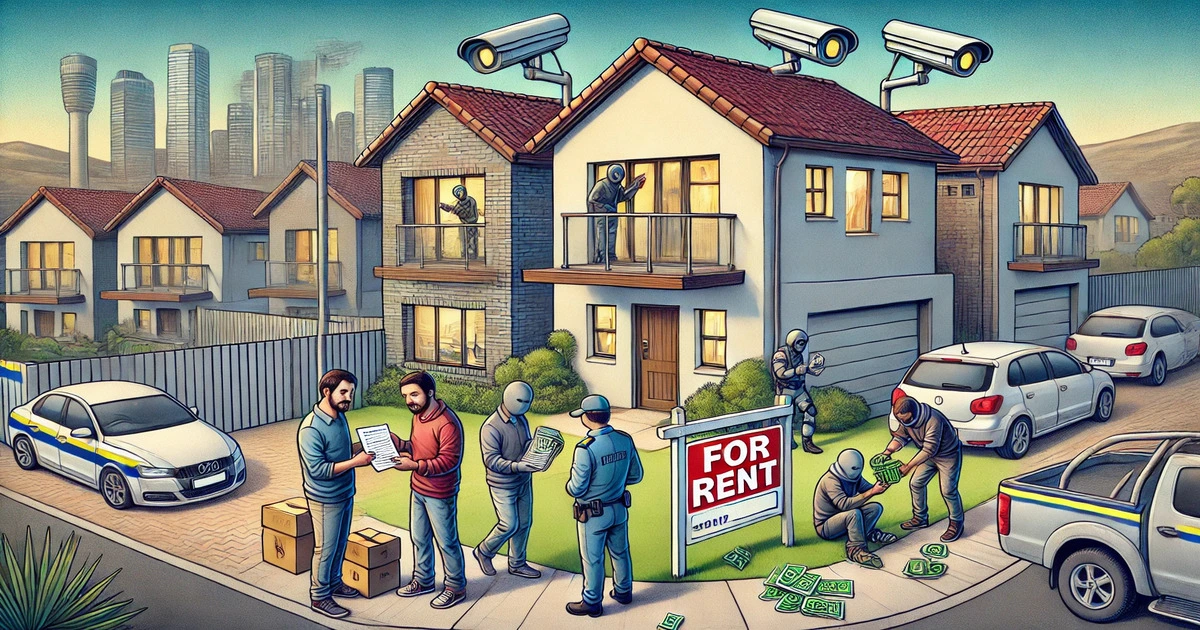How to Deal with Dampness and Mould: A Landlord’s Guide for South Africa
Dampness and mould are persistent problems in many South African rental properties. They not only damage buildings but can also cause significant health issues for tenants, leading to disputes, legal liabilities, and higher maintenance costs. As a landlord, understanding your responsibilities and how to manage these issues effectively is essential for protecting your investment and maintaining a good relationship with your tenants.
In this guide, we explore practical steps for landlords to prevent, identify, and remedy dampness and mould in their rental properties.
Understanding Dampness and Mould
Dampness is excess moisture in a building’s structure or air. It can arise from leaks, rising damp from foundations, inadequate ventilation, or condensation.
Mould is a fungus that grows in damp conditions. It often appears as black, green, or white patches on walls, ceilings, or furniture. Mould spores can trigger allergies, asthma, and other respiratory issues, making it a serious health hazard in rental housing.
Why Landlords Must Take Damp and Mould Seriously
South African rental laws place responsibility on landlords to provide tenants with a property that is “reasonably fit for habitation.” This includes ensuring the property is free of severe damp and mould problems.
If dampness or mould is caused by structural issues, such as leaking roofs, cracked walls, or poor drainage, the landlord must rectify them. Failure to address these problems can result in legal claims, municipal fines, loss of tenants, or even blocklisting on rental databases.
Common Causes of Dampness in South African Properties
Rising Damp
Rising dampness occurs when groundwater moves up through porous walls and floors. It is common in older properties without adequate damp-proofing. Signs include tide marks, peeling paint, and salt deposits.
Penetrating Damp
Penetrating dampness originates from water that leaks through walls, roofs, or windows. This can result from cracked plaster, broken roof tiles, blocked gutters, or faulty waterproofing.
Condensation
Condensation occurs when excess moisture in the air settles on cold surfaces. It often results from poor ventilation, especially in bathrooms, kitchens, and bedrooms. Everyday activities, such as cooking, showering, and drying clothes indoors, contribute to increased moisture levels.
Inspecting Your Property for Damp and Mould
Regular inspections are vital. Look for:
- Water stains on walls or ceilings
- Peeling paint or wallpaper
- Black or green mould patches
- Musty smells
- Rotting wood
- Damp carpets
Inspections should occur before new tenants move in, during the tenancy (with notice), and after heavy rains or storms.
Preventing Dampness and Mould in Rental Properties
Prevention is more cost-effective than repair. Here are some strategies landlords can adopt:
Ensure Good Ventilation
- Install extractor fans in bathrooms and kitchens.
- Install vents or air bricks in closed rooms to improve ventilation.
- Encourage tenants to keep windows open when possible.
Maintain Roofs and Gutters
- Clean gutters regularly to prevent overflow.
- Inspect and repair roof tiles or waterproofing.
- Check for leaks after heavy rains.
Damp-Proof the Building
- Install or repair damp-proof courses in walls.
- Waterproof basements or cellars.
- Seal cracks in walls and foundations.
Control Condensation
- Install dehumidifiers if necessary.
- Promote reasonable indoor heating to reduce cold surfaces.
- Educate tenants on ventilation practices.
Manage Landscaping and Drainage
- Ensure the ground slopes away from the building.
- Clear drains and downpipes.
- Avoid planting water-loving trees close to foundations.
Responding to Tenant Complaints About Damp or Mould
If tenants report dampness or mould:
- Inspect the property as soon as possible.
- Determine the cause—structural fault, leak, or tenant behaviour.
- Communicate clearly with tenants about findings and next steps.
If the cause is structural or maintenance-related, landlords are legally obliged to fix it. This might involve repairing leaks, installing ventilation, or treating mould professionally.
If the problem is mainly due to the tenant’s lifestyle—such as consistently failing to ventilate or drying clothes indoors without sufficient airflow—landlords should advise the tenants on better practices. However, even in these cases, landlords may need to assist in improving the property’s ventilation options.
Repairing Dampness and Mould Damage
Small-Scale Repairs
For minor mould patches caused by condensation:
- Clean with a mould-killing solution or diluted bleach.
- Repaint with mould-resistant paint.
- Advise tenants on ventilation.
Larger or Structural Repairs
For serious dampness:
- Hire a professional to assess the problem.
- Repair structural faults—roof leaks, cracks, broken pipes.
- Replace damaged plaster or finishes.
- Treat affected areas with professional-grade fungicides.
- Improve waterproofing or damp-proofing as needed.
Safety Precautions
- Always wear gloves and masks when cleaning mould.
- Dispose of contaminated materials carefully.
- Ensure work areas are well-ventilated.
Documenting Repairs and Communications
Keeping thorough records protects landlords legally:
- Take photographs of the damage before and after repair.
- Keep receipts for professional services.
- Document all communications with tenants.
These records can help resolve disputes and prove that the landlord acted responsibly.
Legal Considerations for South African Landlords
South Africa’s Rental Housing Act and Consumer Protection Act require landlords to provide premises that are “reasonably suitable” for the purpose for which they are let.
Failure to fix damp or mould problems can lead to:
- Rental Tribunal complaints.
- Orders for repairs.
- Orders for reduced rent or damages.
- Termination of the lease by tenants.
Tenants also have obligations, such as using the property responsibly and promptly reporting any problems. Landlords should educate tenants about their role in preventing mould.
Educating Tenants About Damp and Mould
Good communication helps prevent problems:
- Provide a guide on ventilation and heating.
- Encourage reporting of leaks immediately.
- Explain how lifestyle choices affect condensation.
Some landlords include advice on dampness and mould in lease agreements or welcome packs.
When to Call in Professionals
For persistent, severe, or structural damp problems:
- Hire a damp specialist or building contractor.
- Use qualified plumbers for leaks.
- Consider professional mould remediation services.
DIY solutions are inadequate for significant dampness or mould. Investing in professional help can prevent long-term damage and liability.
Financial Planning for Damp Repairs
Landlords should budget for:
- Regular inspections.
- Maintenance of roofs, gutters, and drains.
- Occasional damp-proofing upgrades.
- Professional cleaning and repairs.
Planning for these expenses helps avoid sudden, significant costs and protects property value.
The Role of Property Managers
If you use a property management company:
- Ensure they inspect for dampness and mould regularly.
- Clarify responsibility for repairs in your contract.
- Require prompt reporting and action on tenant complaints.
A good property manager can help landlords meet their legal obligations and maintain tenant satisfaction.
FAQs
What are the health risks of mould for tenants?
Mould can cause respiratory issues, allergies, asthma attacks, and infections. Vulnerable groups include young children, older people, and people with weakened immune systems. Ensuring a mould-free property is part of providing a habitable rental.
Who is responsible for mould in a rented property in South Africa?
Landlords are responsible if structural issues, leaks, or poor ventilation design cause the mould. Tenants are responsible if their lifestyle causes excessive condensation and they fail to ventilate the property correctly.
Can a tenant refuse to pay rent because of mould?
If the property is uninhabitable due to severe mould and the landlord fails to address the issue, tenants may apply to the Rental Housing Tribunal for a rent reduction or withhold payment. Landlords should always act promptly to avoid escalation.
How can landlords prove they addressed a mould complaint?
Landlords should document:
- Inspection findings.
- Communications with tenants.
- Repair receipts.
- Before-and-after photos.
This protects them legally in the event of disputes.
Should I use mould-resistant paint in my rental property?
Yes, using mould-resistant paint in kitchens, bathrooms, and damp-prone areas is a good preventive measure. It reduces the likelihood of mould returning after cleaning or repairs.
How often should I inspect my property for dampness and mould?
At least annually and ideally at each change of tenancy. More frequent checks may be needed in high-risk areas or older buildings.
What can I do if my tenant won’t ventilate properly?
Educate them about best practices in both writing and verbal communication. Offer practical solutions, such as installing extractor fans. Keep records of these communications to demonstrate that you have addressed the issue.
When should I get professional help for damp or mould?
If the issue is widespread, persistent, or linked to structural problems, professional assessment and remediation are essential. DIY cleaning is only suitable for small, surface-level mould caused by condensation.
By following these guidelines, landlords in South Africa can prevent damp and mould problems, meet their legal obligations, and maintain healthy, habitable homes for their tenants.
Investing in prevention and quick responses is not only a legal duty but also a smart way to protect property value and ensure tenant satisfaction.
Useful External Links
www.gov.za – Official South African Government site (for Rental Housing Act and legal resources)
www.westerncape.gov.za – Provincial resources on housing, health, and building standards
www.housing.gov.za – National Department of Human Settlements for landlord and tenant guidelines
www.nhra.org.za – National Home Builders Registration Council (for damp-proofing standards and advice)
Membership with the South African Landlords Association provides access to expert advice, legal resources, and a community of like-minded professionals.
Enhance your rental management experience and protect your investments by joining today!
Our Top Read Blogs:
How to Sell a House in South Africa Fast
Complete Process of Tenant Eviction in South Africa
South African Property Tax: Comprehensive Guide to Definition, Calculation, and Revenue Impact
Disclaimer:
This post is for general use only and is not intended to offer legal, tax, or investment advice; it may be out of date, incorrect, or maybe a guest post. You are required to seek legal advice from a solicitor before acting on anything written hereinabove.




